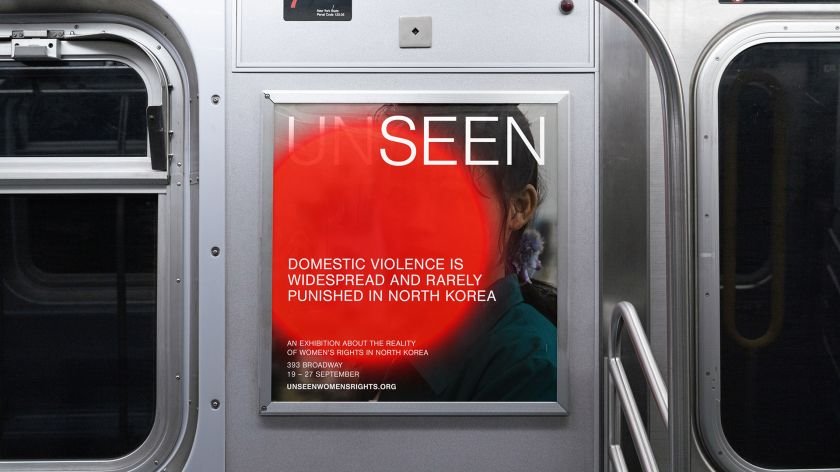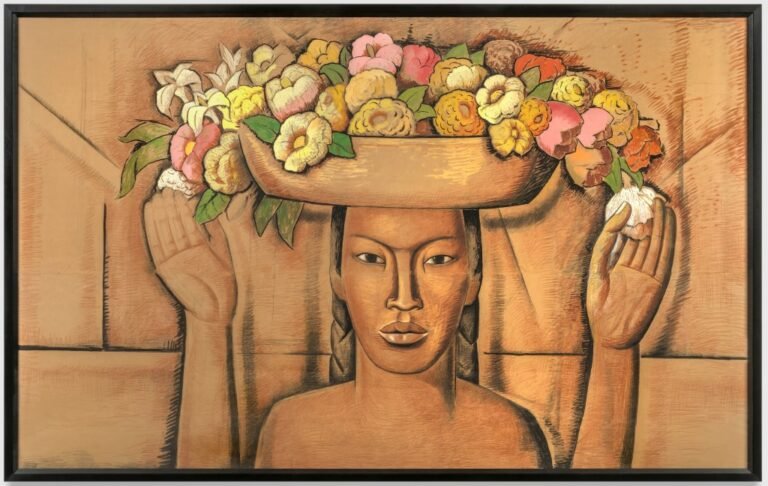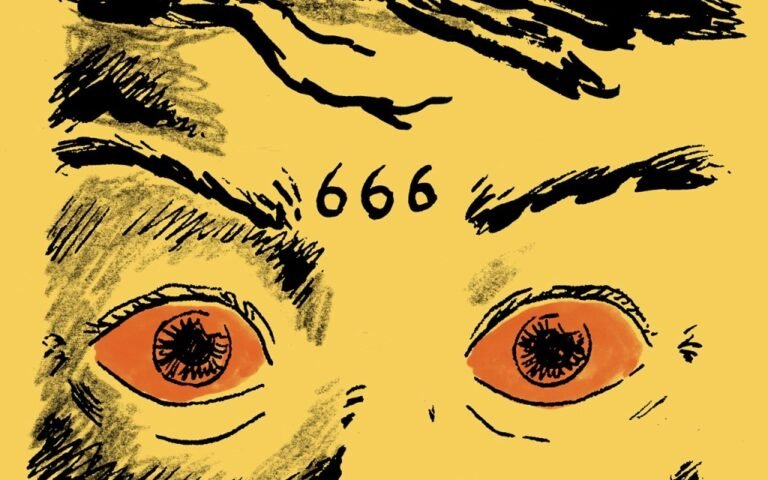

This striking visual initiative harnesses portraiture, public space and design to spotlight the hidden plight of women in North Korea.
When you work as a visual creative, visibility is everything. You shape perception through design, image, narrative and context. But what happens when the people you hope to represent have been deliberately erased from view?
UNSEEN, conceived by Marina Willer and her team at Pentagram, answers that question directly. The campaign uses a powerful visual language to draw global attention to the suffering of North Korean women, and to ask audiences to confront what has been deliberately obscured.
Why women? Admittedly, in the secretive and repressive society of North Korea, systematic violence, poverty and forced labour affect both men and women. Still, they have a particularly marked impact on the latter.
Worse still, many women who succeed in fleeing the country then face trafficking, slavery and sexual abuse once they cross the border into China. Outside of South Korea, though, their stories rarely reach the news media. This campaign aimed to change all that.
What Pentagram made
Marina’s team created the name, messaging and full design of the campaign, which appeared across New York this autumn. At its core is a portrait series in which a translucent red dot covers each woman’s face.





The dot represents violence and erasure, but also resilience and defiance. It partially conceals, while still allowing a glimpse of the face beneath. In this light, it serves not just as a visual device but also as a thoughtful symbol, a way of mediating risk, presence, and visibility.
UNSEEN portraits have appeared on Times Square billboards and 68 Manhattan newsstands, eventually culminating in an exhibition at Lume Studios on Broadway. The campaign is supported by Amnesty International, FIDH (International Federation for Human Rights), HanVoice, ICNK (International Coalition to Stop Crimes Against Humanity in North Korea), NKnet (Network for North Korean Democracy and Human Rights) and CSW (Christian Solidarity Worldwide).
Why it works
The initiative is grounded in stark truths. Women make up more than 80% of North Koreans who flee to South Korea. The journey is illegal and dangerous, and those who escape often face deportation, forced labour or exploitation. Admirably, though, UNSEEN does not fall into sensationalism. Instead, it insists these women be recognised as individuals with agency and resilience, not just statistics or tragic backdrops. It’s a lesson in thoughtful representation, and in how creativity can carry responsibility.



A project like this asks big questions about ethical storytelling. How do you depict vulnerability without exploiting it? How do you communicate danger while maintaining dignity? UNSEEN navigates this minefield by giving its subjects presence, while mediating exposure. In this light, the red dot serves as both mask and statement; a visual metaphor that simultaneously conceals and compels.
Lessons for creatives
So what broader lessons can creatives take away from this campaign? I’d argue it’s the idea that your work is never neutral. Every choice — from colour and composition to medium and placement — carries meaning, responsibility, and potential impact.
UNSEEN works because photography, design, exhibition and public space operate in concert. The red dot is simple, but the system around it (messaging, identity, curation, and placement) makes it powerful. It’s a great reminder that cross-disciplinary thinking can elevate work far beyond what a single medium can achieve.



I’d say it also highlights how audiences are willing to be challenged rather than comforted. The project deliberately leans into tension: it asks the viewer to pause, reflect, and confront something difficult.
And sometimes that approach can feel risky. But ultimately, this is the kind of work that lingers, the work that provokes action and conversation.
In summary, UNSEEN succeeds by turning absence into presence. That red dot is not a barrier; it’s a demand. Look at what’s been hidden. Look at who’s been hidden.
It’s a reminder that good creative work does more than look beautiful; it stops people in their tracks.
It changes perspective. It insists the world look back, even when what’s revealed is uncomfortable. UNSEEN is a masterclass in how to do exactly that.


